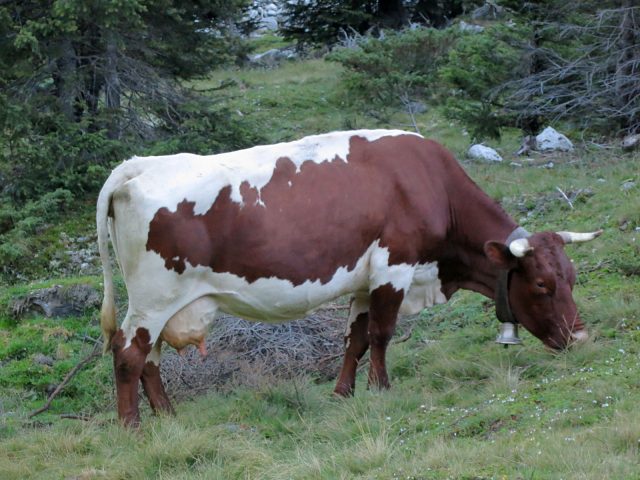Type the name of the breed you're looking for below
[wpdreams_ajaxsearchlite] Don't see the breed your're looking for? Click here and let us know!
Pinzgauer cattle
| Place of Origin | Austria |
| Origin | According to genetic and morphological studies, the Pinzgauer cattle breed is most closely related to North German lowland breeds. The Pinzgauer was first referred to as a breed in 1846, and prior to this called "Pinzgauer Fasel" or "Pinzgauer Schlag." In the 19th century, they were bred into strong stock for work on farms, at breweries, and in sugar-beet areas. In its heyday, the Pinzgauer became the most popular cattle breed in Austria-Hungary, subsequently expanding through Eastern Europe. The Bavarian Pinzgauer Cattle Breeding Association was founded in 1896. By December 1890, the Pinzgauer population had grown to 101,880 in Bavaria, but it eventually collapsed as a result of industrialization after World War I. Demand for the cattle decreased, and the breed was replaced by better milk-producing breeds such as Fleckvieh cattle. By 1930, Bavaria had only 85,000 Pingzauer cattle. The Pinzgauer breed has a naturally polled type, the Jochberg Cattle. These cattle descend from a single, almost totally white calf that was born in 1834 in Tyrol. They were considered crippled and useless because they could not put on a yoke. Now that Pinzgauer are not yoked, and the hornless breed is best adapted to modern husbandry. There are now fewer than 50 hornless Pinzgauer cattle in the world, so the type is endangered. Since 1988, there have only been two hornless bulls at the insemination station near Salzburg. |
| Purpose | Formerly triple-purpose, meat, milk and draught (work) Now just meat and dairy. |
| Appearance | The animals are auburn in colour. A luscious chestnut-colour is the breeding target. Black animals have occurred, but rarely, and were once seen as a curse. After 1900, black bulls were removed from the breeding system, and the black colour vanished. All Pinzgauers have the breed-typical white pattern in common: a broad white stripe lengthwise along the whole back. The abdomen, chest, udder, and tail are white as well. |
| Horns | Usually horned; there is a hornless sub-type. |
| Cows Average Weight | 650 kg (1,433 lbs.) |
| Bulls Average Weight | 1,000 kg (2,205 kg) |
| Other Considerations | The Pinzgauer breed is considered endangered, and the population decreases about 10% per year. In 2001 there were 36,000 animals in Germany, and worldwide there were around 1.3 million. In Austria in 1995 there were 53,874 animals, 9,883 of which were registered in stud books. Two conflicting tendencies caused the current rarity of purebred, high-performance animals. The Pinzgauer is mainly bred as a beef suckler cow, so there is no selection on milk performance. However, there are utility crossings with local or distinct beef breeds, too. In Austria itself, since 1969, Red Holstein have been crossed into Pinzgauer to increase the milk performance. The aim is to achieve 6,000 kg milk with 4% milk fat content and 3.5% protein. The average milk performance in Austria is 5,356 kg milk with 3.89% milk fat and 3.28% protein (2005). |



